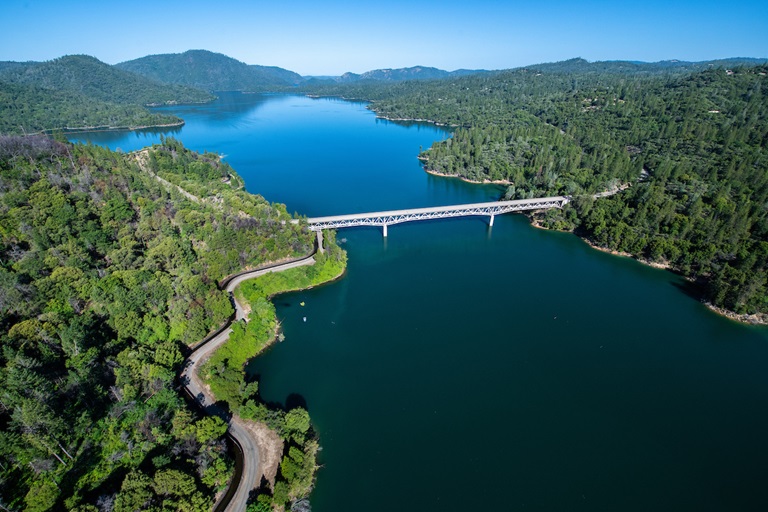In next few weeks, it's likely that one by one the hydro (water) turbines, that provide much of CA electricity will be shutting down due to lack of water to power them! I don't know if that has happened before, I sure don't recall it and I was born in CA! Anne, there's something for you to research, have they ever had to shut turbines down for lack of water?
and, from me:
Velda, that is a really interesting question! I love questions like this. LOL, I'm on it! Fun stuff for me. Thanks!
Anne
Well, I don't know if any of you will find this as interesting as I did, but here we go.
For the most part, I tried to stay with government websites as it is (generally) government agencies that collect the data in the first place, the data found on government websites is (generally) vetted by the agency uploading it, and thus tend, over-all, to (generally) have the most accurate information.
Alternatively, in the wild world of the Web, anyone, anywhere, anytime can create a website that might contain information purported as “facts” which are in actuality are little more than (at best) conjecture or (at worst) the wild imaginings of the website’s creator.
With these disclaimers out of the way:
Definition of hydropower, or hydroelectric: Electricity that is produced through the power of moving water (hydro = water).
Aside and totally off-topic (I can’t help myself
Anyway:
“Hydroelectric power in California is broken down into two categories: large hydro, which are facilities larger than 30 megawatts (MW), and small hydro. Small hydro plants qualify as renewable energy under the Renewables Portfolio Standard. The annual hydropower production in California varies yearly and depends on rainfall.”
https://www.energy.ca.gov/data-reports/california-power-generation-and-power-sources/hydroelectric-power
As of 2018 (the most recent stats that I found) hydroelectric power (a combination of “small” and “large” hydro, as referenced above) produces about 13.52% of California’s electricity.
Other ways electricity is produced in California:
Natural Gas
Nuclear (!)
Oil
Other (petroleum coke/waste heat)
Renewables
Biomass
Geothermal
Solar
Wind
Coal (!)
https://www.energy.ca.gov/data-reports/energy-almanac/california-electricity-data/2019-total-system-electric-generation/2018
“Large hydro projects are those larger than 30 megawatts (MW) of generation capacity. The U.S. Bureau of Reclamation and the state's Department of Water Resources operate Large hydro plants in California such as Folsom Dam, Oroville Dam, and Shasta Dam."
Map (includes amount of GWH – Giga-Watt-Hours – generated in each county (2019) scroll down the page for each counties stats):
https://cecgis-caenergy.opendata.arcgis.com/documents/2019-utility-scale-hydroelectric-generation/explore
Power plant locations (map does not specify what kind of power is produced at these locations – i.e., either hydroelectricity or electricity generated by some other means, as listed above):
https://cecgis-caenergy.opendata.arcgis.com/datasets/california-power-plants/explore?location=37.307575%2C-118.394256%2C6.39
Number and types of power plants generating “Utility Scale” power:
https://cecgis-caenergy.opendata.arcgis.com/documents/operational-electricity-market/explore
There are thirty-six Counties in California generating hydroelectricity. Of these, 19 counties are capable of generating “large” hydro (as defined above).
Here is a listing of the number of hydro plants in California, both Large and Small (there are a LOT of them - I had no idea!) – 202 small, and 72 large hydro plants, for a total of 274 hydro plants in California (!) as of 2020:
https://ww2.energy.ca.gov/almanac/renewables_data/hydro/index_cms.php
As to finally getting to your question (LOL – this has been a fascinating ride, I had NO idea about any of this!) lightly searching (I only spent a couple of hours on this project) only one of Oroville’s (there are three in Oroville) hydro plants, the Edward Hyatt Powerplant, is projected to possibly need to shut down due to low water levels.
The references I have found all state that, if it happens, it will be the first time ever.
No word on the other two hydro plants in Oroville, or on any of the other hundreds of hydro plants in California.
Perhaps I could discover more if I was able to commit more time this effort. If anyone would like to add anything here, please jump in!
But my guess (LOL – my conjecture!) is that many, if not most of of the hydroplants in California (and in other western states as well), will be looking at serious difficulty in the coming months due to dwindling water supplies.
Thanks, Velda!
Anne







